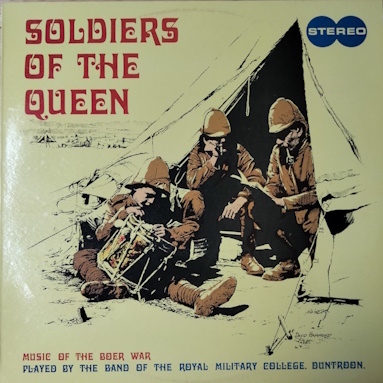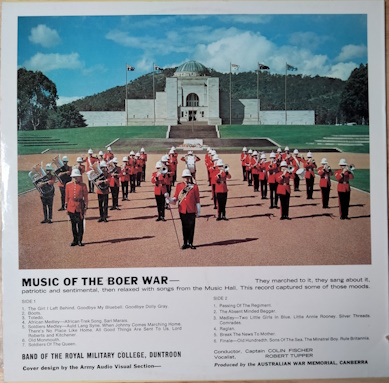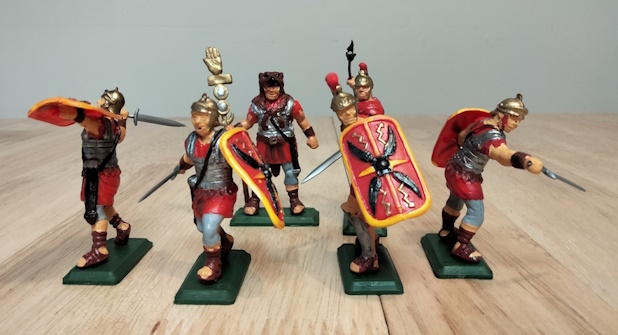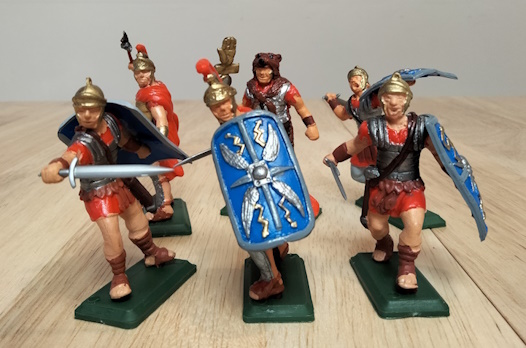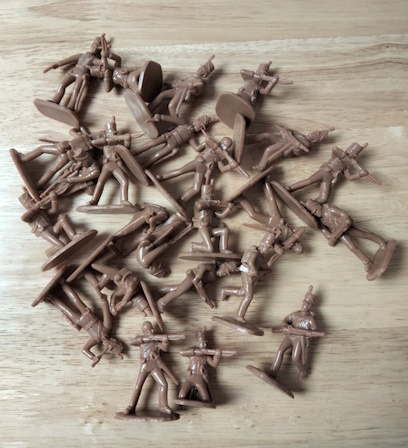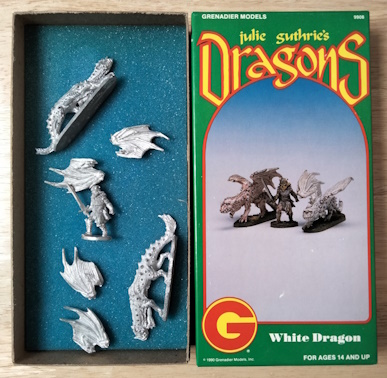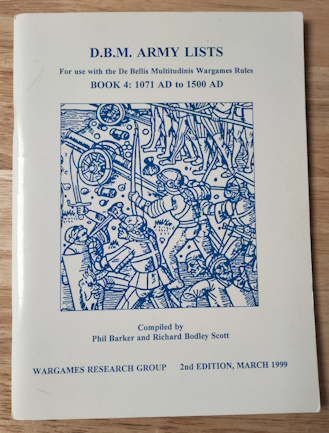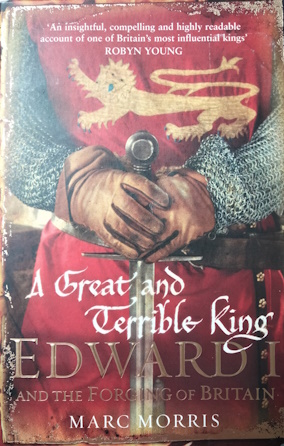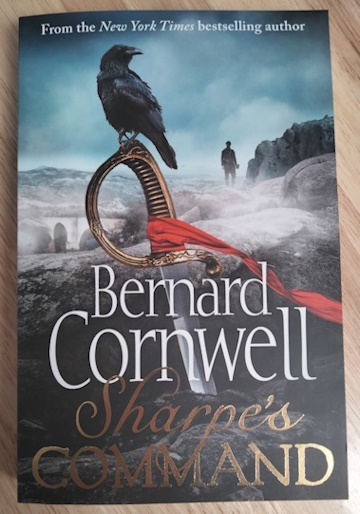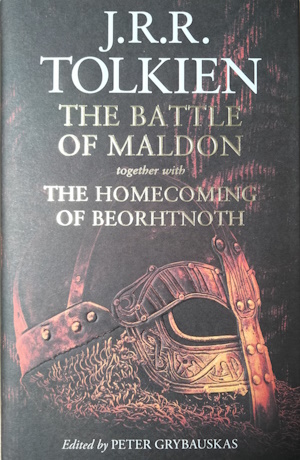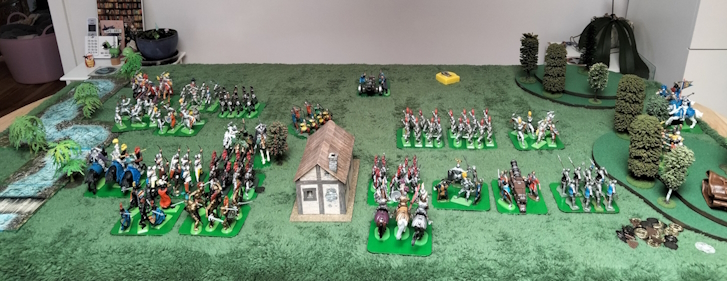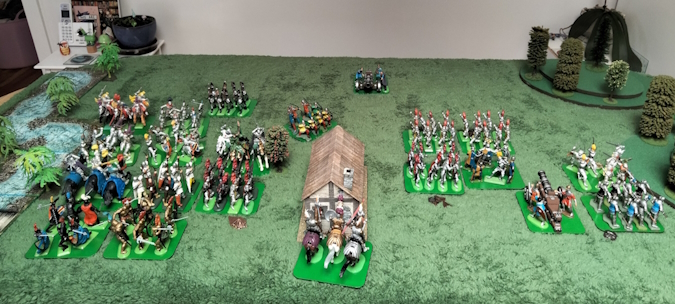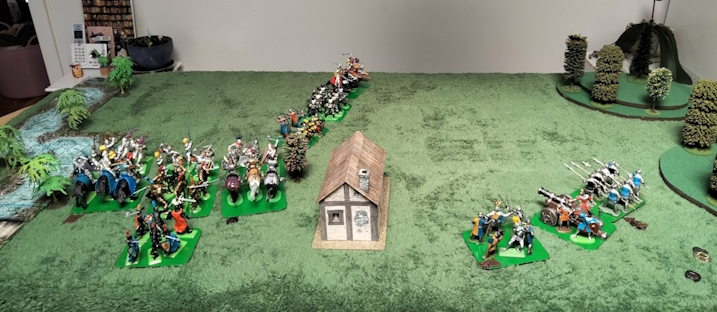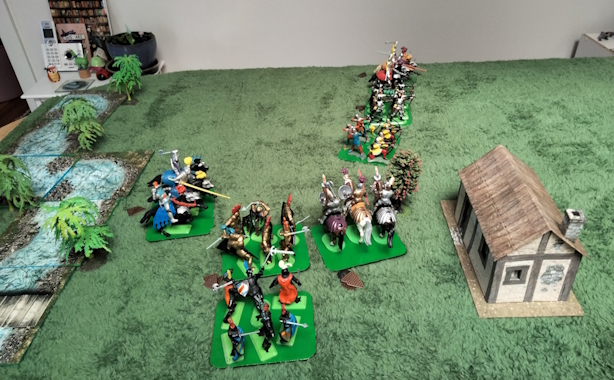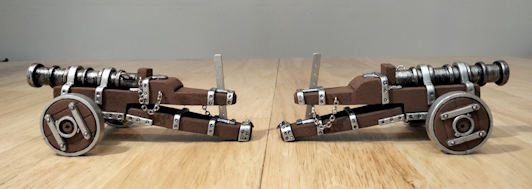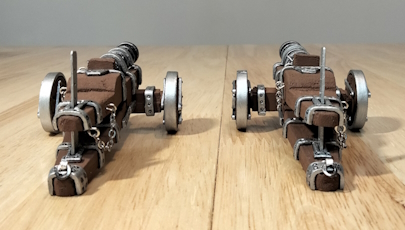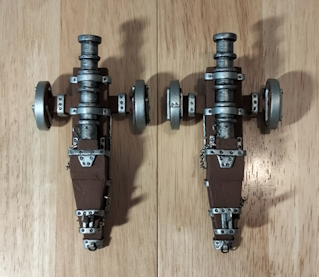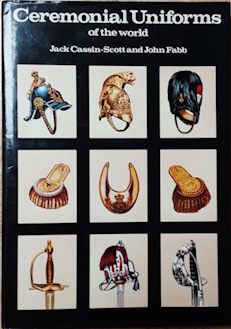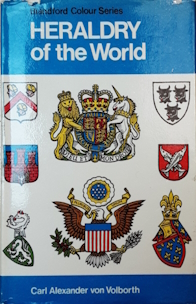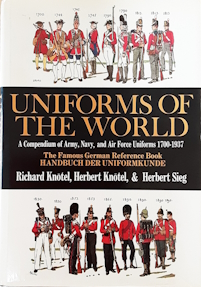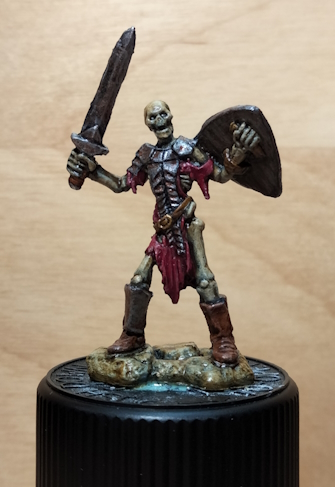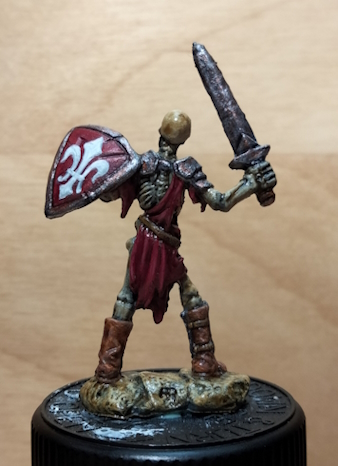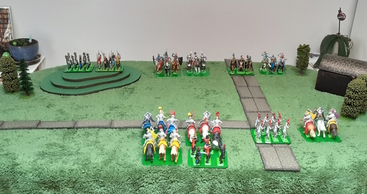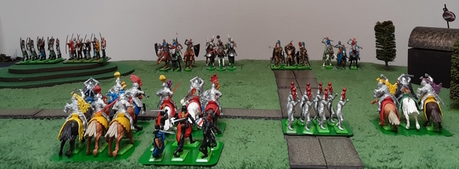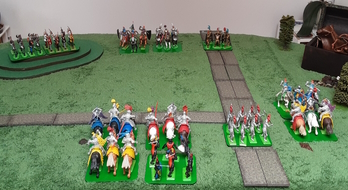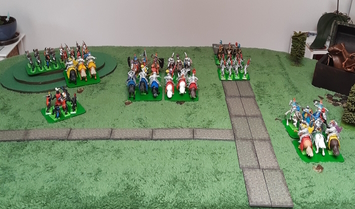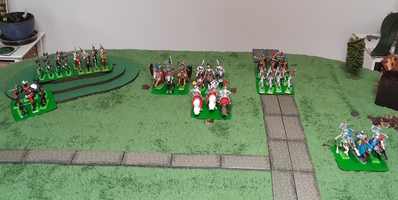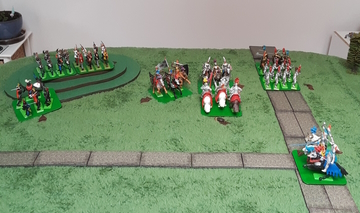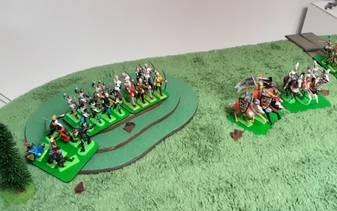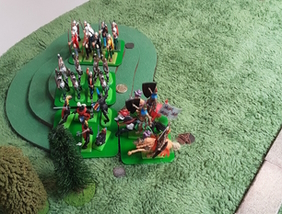
The World Illustrated News is pleased to report that the British Interplanetary Zoological Society’s expedition to Venus has been a triumph. The expedition sponsored by the society was led by renowned explorer and big game hunter Sir Arthur Runcible-Spoon, E.P.N.S. He was ably supported in his endeavours by a detachment of valiant men from the Tasmanian Rifle Regiment under Captain Richard Anglesey.
The aim of the expedition was to capture alive one or more of the reptilian denizens of Venus for scientific research. The creatures, called “dinosaurs,” inhabit the jungle that surrounds the newly established colonies and, while large, are significantly smaller than those of Earth’s geological past. Although it is said by explorers that greater beasts dwell in the vast depths of the Venusian jungle.
Sir Arthur has recently returned to London with the magnificent specimen of an “Armagasaurus” obtained by the expedition. The British Interplanetary Zoological Society has generously given permission for the animal to be placed on display. The great beast can now be viewed in the Geological Court at the Crystal Palace for the trifling sum of one shilling.

The Game
Turn 1. The expedition moves off into the forbidding Venusian jungle, consisting of Sir Arthur Runcible-Spoon E.P.N.S. and a detachment of the Tasmanian Rifle Regiment (T.R.R.) under Captain Richard Anglesey. Sir Arthur, in his eagerness, forged ahead.
From deep in the jungle, a lone Triceratops (trike) emerges, far from the expedition, and ambles towards the marsh.

Turn 2. The men of the T.R.R. follow Sir Arthur. While a Tyrannosaurus rex also emerges from the jungle and begins to stalk the lone trike.
Turn 3. Sir Arthur, feeling the heat of the humid Venusian climate taking its toll, decides to stop for “tiffin,” and the expedition stops to take a rest.
The trike approaches the marsh. The T. rex decides not to follow and stays put. A second trike emerges from the jungle, but, hearing the unfamiliar noises coming from the adventurers, it moves away.
Turn 4. The expedition continues with their tea break. The first trike realises it is being stalked, turns around, and charges the T. rex. The second trike continues to move away from the expedition, while a Stegosaurus begins feasting on the plant life close to where the T. rex and first trike are situated.

Turn 5. As “tiffin” continues, a very territorial Styracosaurus comes out of the jungle and aggressively attacks the peaceful Stegosaurus. The first trike attacks the T. rex. Trike two wanting to put more distance between it and the expedition keeps going.
Turn 6. With “tiffin” finally finished, Sir Arthur moves off into the jungle, leaving the men of the expedition to break camp.
The charge of the first trike so surprises the T. rex that it runs away. The Styracosaurus and the Stegosaurus fight it out. Ultimately, the Styracosaurus (which takes 3 damage) wins, and the Stegosaurus is killed (having taken 7). The second trike moves further away.

Trike one follows up and charges the T. rex again. The Styracosaurus sees the T. rex, becomes enraged, and moves sharply towards it.

Turn 7. Sir Arthur ventures ever further away from the expedition and into the jungle in search of dinosaurs. Captain Anglesey splits his men and sends three to assist Sir Arthur while he follows up with the rest.
The T. rex once again flees before the aggressive trike. With the giant predator gone, the Styracosaurus and the Triceratops turn on each other, and a fight for supremacy takes place. An Amargasaurus ventures out of the surrounding jungle and begins to graze on the lush vegetation near the expedition’s location.
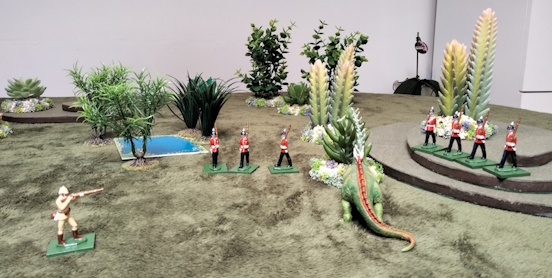
Turn 8. Sir Arthur and the men of the expedition see the Armagasaurus. The forward party immediately begins digging a pit trap to catch the dinosaur, while Sir Arthur turns back to assist in the capture of the beast. Captain Anglesey forms the remaining men into line in preparation to drive the animal towards the pit.
Turn 9. While the pit trap is being excavated, Sir Arthur moves to block the likely escape route of the Armagasaurus. The beast blissfully continues to graze, unaware of the preparations to capture it.
The clash between the first trike and the Styracosaurus ends in the death of the Styracosaurus (having taken 4 extra damage on top of that from the fight with the Stegosaurus). The trike, however, did not escape unscathed and limped away (after taking five hits).

Turn 10. The pit trap is completed, and the beaters move forward, driving the Armagasaurus before them. The sauropod attempts to flee from the beaters, only to fall into the pit trap. Finally, the expedition had success.
The first trike, despite its wounds, charges the T. rex, which flees before it. The trike charges again, but this time the T. rex doesn’t give ground, and a fight ensues. The second trike encounters the fight and, seeing the T. rex, panics and flees back towards the expedition.
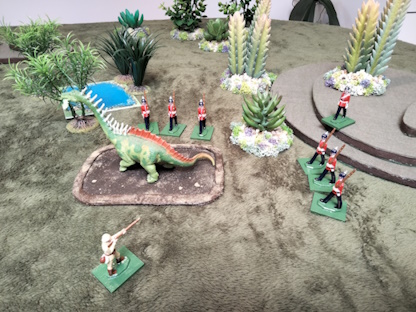
Turn 11. The expedition travels further into the forbidding Venusian jungle. Sir Arthur and the three men with him hear the bellows and roars of the fight and move towards the sounds. They come in sight of the titanic struggle between the T. rex and the Triceratops. The second trike flees further away from all apparent danger.
Turn 12. Hoping to bag the T. rex, Sir Arthur and the men with him fire at it but miss. The T. rex finally kills the Triceratops and roars in triumph. It then turns its attention to the men.

Turn 13. The rear section of the expedition under Captain Anglesey moved up to reinforce Sir Arthur’s group. The entire group forms a crescent around the T. rex and begins firing (inflicting 4 hits). The badly wounded T. rex panics and flees from the expedition.
Turns 14 and 15. The adventurers pursue the T. rex but are unable to catch it as it continues to flee deep into the jungle and out of sight.

The game was played out over the recent long weekend using the “Sir Harry & the Dinosaurs” rules. The object is to catch as many dinosaurs as you can in a set time. For this game, I instead decided to play it for fifteen turns. The player controls the expedition, while a simple AI governs the behaviour and actions of the dinosaurs. Unfortunately, the rules only provide stats for four types of dinosaurs, namely Tyrannosaurus, Triceratops, Stegosaurus, and Brontosaurus. However, the stats can be readily applied to any similar creature, and, with some work, more specific stats could be figured out for a wide variety of prehistoric animals. The game proved to be great fun, and I enjoyed seeing how the interactions of the various dinosaurs played out with each other and ultimately with Sir Arthur’s expedition. I am sure he will eventually return to the humid jungle of Venus to make greater discoveries.

